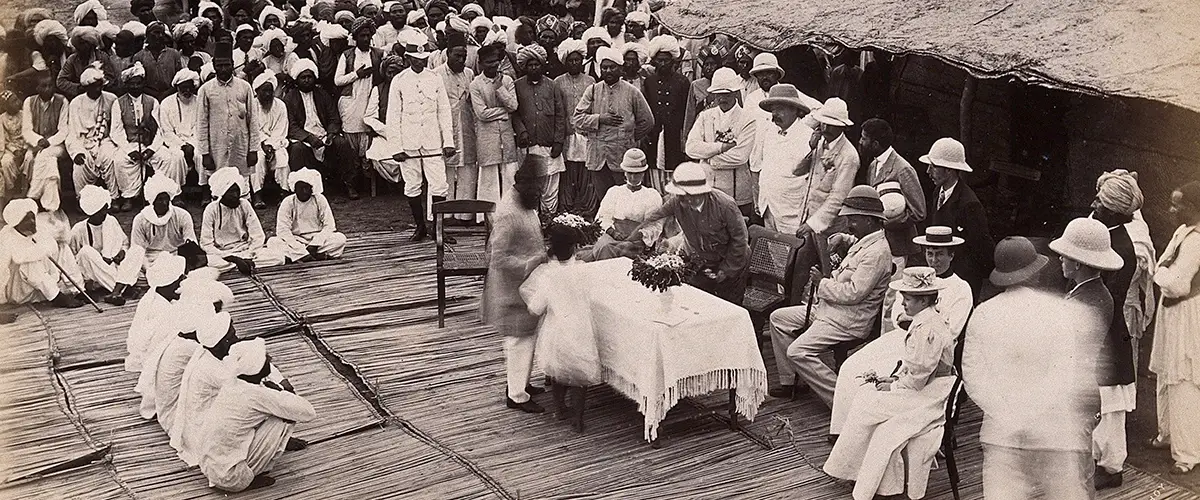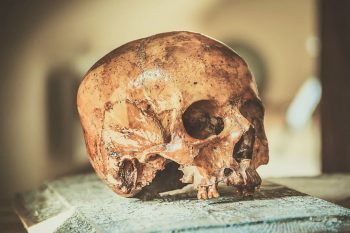(Article photo above depicts discharged hospital patients after bubonic plague outbreak, being given relief money in Karachi, India. Photograph, 1897. Photo via Wikimedia Commons)
What is the Black Death?
The Black Death, also known as the Bubonic Plague, was one of the deadliest pandemics in human history. It swept through Europe in the mid-14th century, and is estimated to have killed between 75 and 200 million people.
The disease was caused by the Yersinia pestis bacterium, which was transmitted by fleas that infested rats. The symptoms of the disease included high fever, painful swelling of lymph nodes (buboes), and blackening of the skin due to internal bleeding. The Black Death had a profound impact on the world, causing significant social, economic, and religious upheaval, as well as leaving a lasting impact on medicine and public health.
Key historical context related to the Black Death
The Black Death occurred during the medieval period, a time in European history characterised by feudalism, the rise of the Catholic Church, and the beginnings of capitalism.
The mid-14th century was a time of significant change and global connectivity. Europe was experiencing a period of economic growth, and trade routes extended from Asia to Europe. This facilitated the spread of the disease along trade routes and through seaports.
During the medieval period, there was little understanding of disease transmission, and medical knowledge was limited. Many treatments were based on superstition and religious belief.
The Catholic Church was a dominant force in Europe during the medieval period, and many people saw the Black Death as a punishment from God. Religious fervour and apocalyptic beliefs were common responses to the pandemic.
The Black Death had a significant impact on social structures, particularly in Europe. The pandemic resulted in a labor shortage, leading to increased wages for workers and a decline in the power of the feudal system. It also led to changes in the way people thought about death and the afterlife.
The Black Death had a profound impact on art and literature. It inspired new forms of artistic expression, such as the Danse Macabre, a medieval dance that depicted death as a dancing skeleton. It also influenced literature, with authors like Boccaccio and Chaucer writing about the pandemic in their works.
The symptoms and spread of the Black Death
Symptoms
The symptoms of the Black Death typically appeared within 2-5 days of infection. They included high fever, chills, muscle aches, and fatigue.
The most distinctive symptom was the appearance of painful and swollen lymph nodes, or buboes, which could be found in the neck, groin, and armpits. As the disease progressed, patients may have developed septicemia, which caused the skin to turn black due to internal bleeding.

Spread
The Black Death was primarily spread by fleas that lived on rats. When infected rats died, the fleas would seek out new hosts, including humans. The disease could also be spread through human-to-human contact, particularly through contact with bodily fluids.
The disease spread quickly and efficiently along trade routes and through seaports, and it was able to reach many parts of the world.
The Black Death is believed to have originated in Central Asia and spread westward through trade routes, eventually reaching Europe in the mid-14th century. It then spread across the continent, reaching as far north as Scandinavia and as far south as North Africa. It also spread to other parts of the world, including Asia and the Middle East.
Mortality rates
The Black Death was one of the deadliest pandemics in human history. It is estimated to have killed between 75 and 200 million people, with mortality rates varying depending on the region and the population. In some areas, mortality rates were as high as 90%, while in others they were closer to 30-50%.
Impact on society
The rapid spread and high mortality rates of the Black Death had a profound impact on society. It caused significant social, economic, and religious upheaval, and it changed the course of history.
The pandemic also had a lasting impact on medicine and public health, as it spurred the development of new medical treatments and public health measures.
Does the Black Death still exist?
The bacterium that causes the Black Death, Yersinia pestis, still exists today. It is primarily found in rodent populations, particularly in rural areas in parts of the world such as Asia, Africa, and the Americas.
Humans can still become infected with the disease through contact with infected animals or their fleas. However, modern medical treatments and public health measures have made it much less likely for the disease to cause a large-scale pandemic like it did in the past. Additionally, early detection and treatment with antibiotics are effective in treating the disease, which significantly reduces the mortality rate.


